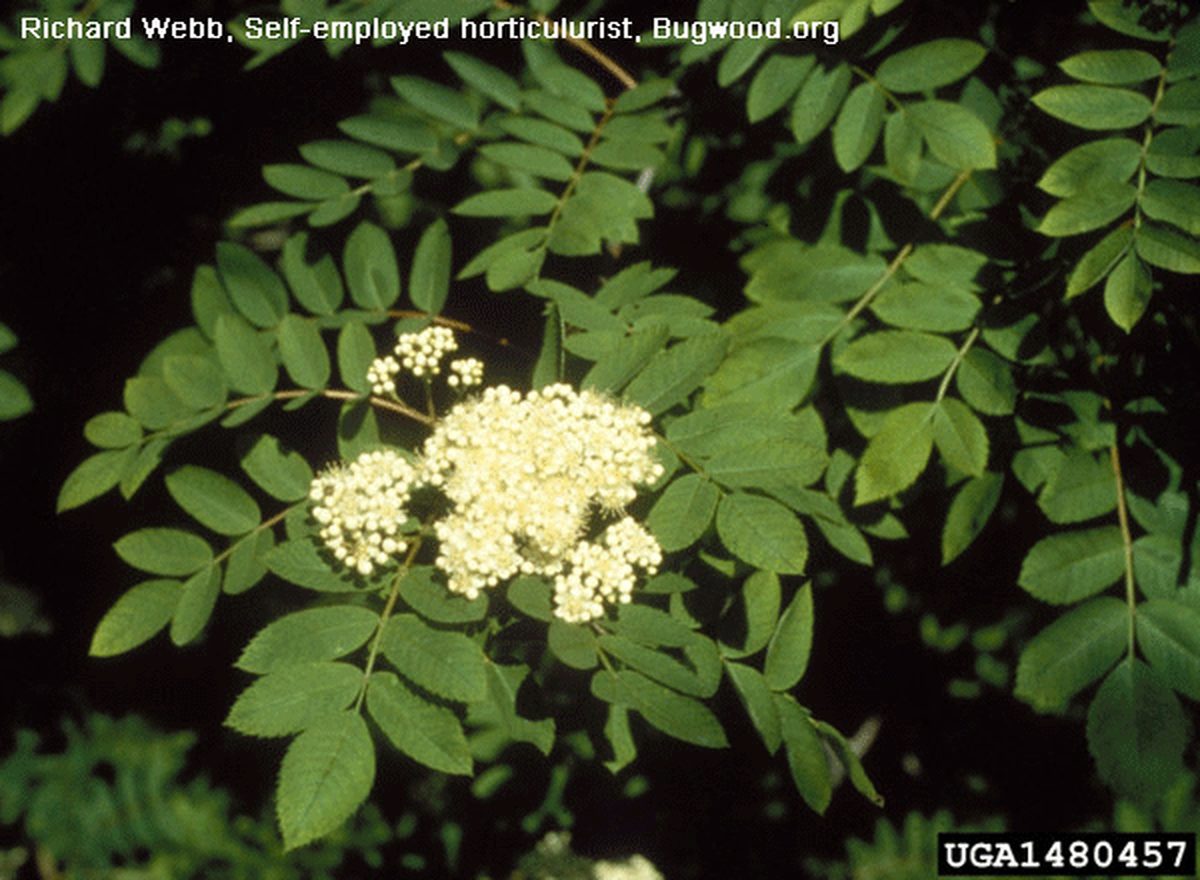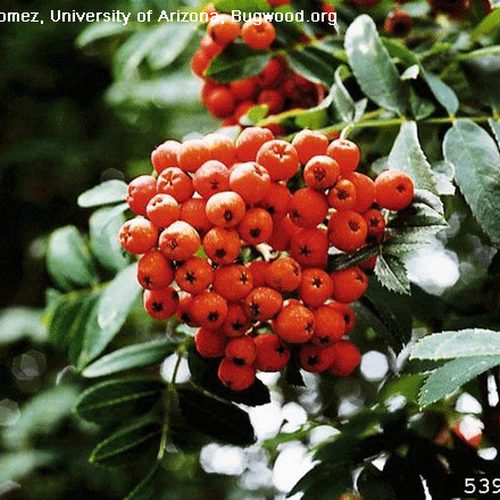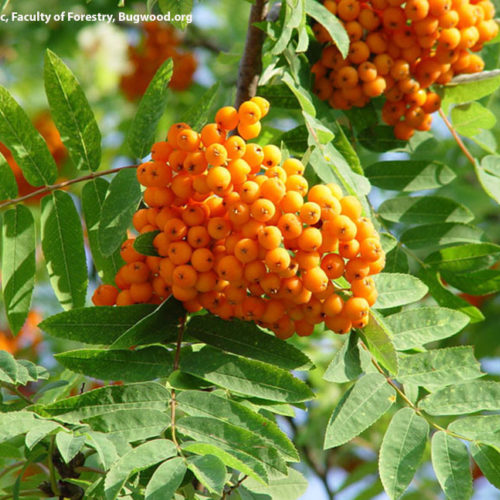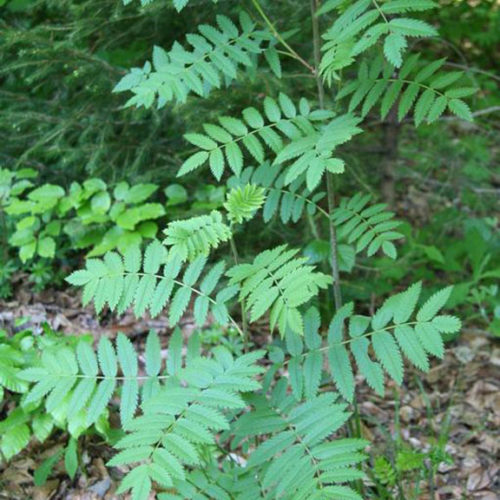European Mountain Ash
Sorbus aucuparia

Family: Rosaceae
Other Common Names: rowan-berry
Weed class: monitor list
Native to: Asia and Europe
Is this Weed Toxic?:
humans
Why Is It a Noxious Weed?
This plant is on the monitor list - it is not a listed noxious weed in Washington. Please contact the state weed board at noxiousweeds@agr.wa.gov to report locations or for more information.
How would I identify it?
General Description
This (usually small) tree is popular in garden plantings and was frequently planted on homesteads. It can grow up to 50 feet tall.
Flower Description
It can take over 10 years for a tree to start producing flowers and fruit. Each flower is made of 5 white petals, and are less than half an inch wide. They grow in flat topped bunches all over the outside of the tree.
Leaf description
The leaves are compound, made up of 4 to 9 leaflets. Each leaflet is a narrow egg shape, 0.75-2.25 inches long, and have serrated edges.
Stem description
These trees usually grow multiple trunks, when not pruned. The bark is yellow to gray, and ages to gray black with cracks and flakes. The wood is reddish to white or brown.
Fruit Seed Description
When ripe, the hard berries start green and ripen to orange or orange-red. Inside, they are 5 segmented, each containing 2 flat seeds
May Be Confused With
The leaves are similar to our native elderberries, but much smaller. The berries can look like red elderberry, but are larger than our native elderberries, and much firmer.
Where does it grow?
Escaped from gardens and homesteads, birds spread the seed across a landscape. It can survive in full to partial sun, and from sea level to high elevations.
How Does it Reproduce?
Seed, frequently spread by birds
How Do I Control It?
Please refer to the PNW Weed Management Handbook, or contact your county noxious weed coordinator.
For More Information
King County Noxious Weed Control Program information on European mountain ash
Invasive Plant Atlas information on European mountain ash






